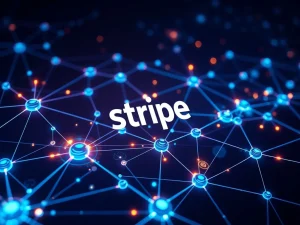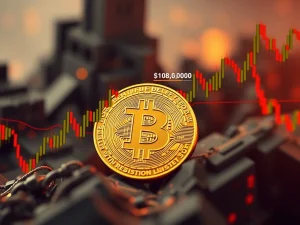Alarming Crypto Rug Pulls: Less Frequent but More Devastating, DappRadar Exposes

Are you breathing a sigh of relief thinking crypto rug pulls are becoming a thing of the past? Think again. While the number of these scams has thankfully decreased, new data from DappRadar reveals a disturbing trend: when crypto rug pulls do occur now, they are significantly more damaging. Let’s dive into the latest findings and understand how to navigate this evolving threat in the crypto world.
Why are Crypto Rug Pulls Still a Major Threat?
Despite a promising 66% year-on-year decrease in the frequency of crypto rug pulls compared to 2024, the size of the scams has ballooned. DappRadar’s recent report highlights a stark contrast: in early 2024, there were 21 reported rug pull incidents, whereas in early 2025, that number plummeted to just seven. Sounds like progress, right?
However, the devil is in the details. DappRadar’s analysis reveals that despite fewer incidents in 2025, the Web3 ecosystem has been drained of nearly $6 billion due to these scams. This staggering figure is largely attributed to the collapse of Mantra’s OM token, although the founders vehemently deny it was a rug pull. To put this into perspective, losses from rug pulls during the same period in early 2024 totaled a mere $90 million. This paints a clear picture: fewer scams, but exponentially greater devastation when they strike.
DappRadar analyst Sara Gherghelas aptly summarizes this shift: “This suggests that rug pulls are becoming less frequent, but far more devastating when they do occur. The scams are increasingly sophisticated, often orchestrated by teams with polished branding and well-planned narratives.”
Memecoins: The New Hotspot for Crypto Scams
The landscape of crypto rug pulls is also shifting in terms of where these scams originate. According to Gherghelas, in the first quarter of 2024, DeFi protocols, NFT projects, and memecoins were all breeding grounds for rug pulls. Fast forward to the same period in 2025, and memecoins have emerged as the primary source.
A prime example is the Libertad project’s Solana token, Libra (LIBRA). Riding a wave of hype after Argentina’s President Javier Milei mentioned it on X (formerly Twitter), Libra’s market cap skyrocketed to $4.56 billion. However, this meteoric rise was short-lived. When Milei deleted the post, the token’s value plummeted by over 94%, sparking widespread accusations of a pump-and-dump scheme and a rug pull.
Red Flags: How to Spot Potential Crypto Rug Pulls
While scammers are becoming more sophisticated, there are still telltale signs that can help you identify potential crypto scams before it’s too late. Gherghelas points out several key red flags:
- Sudden Spike in Unique Active Wallets: Be wary of projects that experience a rapid surge in wallet activity without any clear, organic reason.
- Unusually High Volume with Low User Activity: If a token shows massive trading volume but lacks genuine community engagement or user transactions, it could be a manipulated market.
- Unverified Smart Contracts: Legitimate projects usually have their smart contracts audited and verified. Lack of verification is a major warning sign.
- Limited GitHub Activity: Active and transparent development is crucial. Minimal or nonexistent GitHub activity suggests a lack of genuine project development.
- Anonymous Developer Teams: While anonymity isn’t always a red flag in crypto, it can be concerning, especially for newer projects. Lack of transparency about the team makes it harder to assess legitimacy.
- Overnight DApp Spikes: Be skeptical of decentralized applications (DApps) that suddenly appear and gain traction rapidly without a proven track record or community backing.
DappRadar analyst Sara Gherghelas explains red flags for rug pulls. Source: DappRadar
Staying Ahead of Evolving Crypto Scams
The battle against crypto scams is an ongoing evolution. As Gherghelas notes, “As the industry matures, so do the tactics used by bad actors. But the tools available to users are also getting stronger.” While completely eradicating rug pulls might be an unrealistic goal, significantly reducing their impact is achievable.
The key lies in user education and awareness. By understanding the red flags and utilizing available tools to detect suspicious activity, crypto investors can empower themselves to make more informed decisions and protect their assets. Remember, vigilance and skepticism are your strongest allies in the fight against crypto scams. Don’t let hype and FOMO cloud your judgment. Always do thorough research and be cautious of projects that seem too good to be true.
Conclusion: Be Vigilant Against Crypto Rug Pulls
While the decrease in the number of crypto rug pulls is a positive sign, the increased scale of damage is a serious cause for concern. The shift towards memecoins as primary targets and the sophistication of these scams demand heightened vigilance from crypto investors. By staying informed, recognizing the red flags, and utilizing available resources, you can navigate the crypto landscape more safely and minimize your risk of falling victim to these devastating crypto scams. The power to protect your investments lies in your hands – use it wisely.










